#Adam Roarke
Text
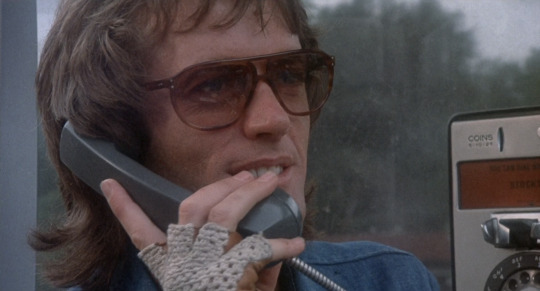
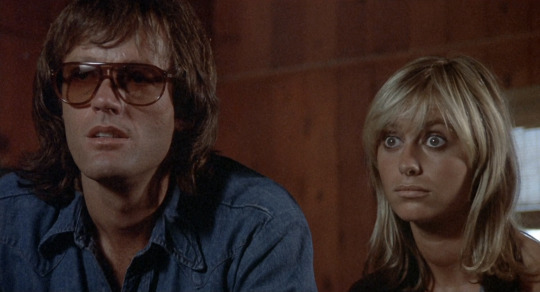


Peter Fonda in Dirty Mary Crazy Larry (1974)
153 notes
·
View notes
Text

Frogs - 1972 - Dir. George McCowan
Japanese B2 Poster
#Ray Milland#Sam Elliott#Joan Van Ark#Adam Roarke#Judy Pace#Lynn Borden#Mae Mercer#David Gilliam#George McCowan#Frogs - Killer aus dem Sumpf#Killer aus dem Sumpf#frogs 1972#frogs#movie#movie poster#film poster#movie posters#japanese poster#japan#japanese#1972#horror#horror movie#horror poster
3 notes
·
View notes
Text


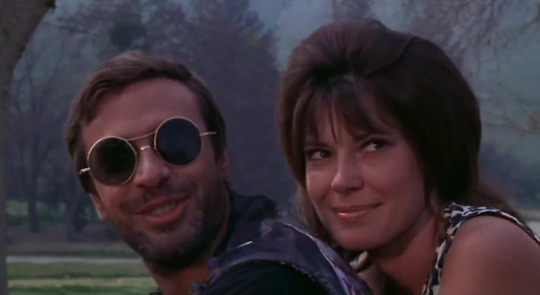
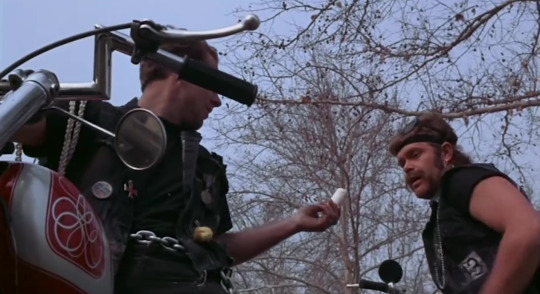
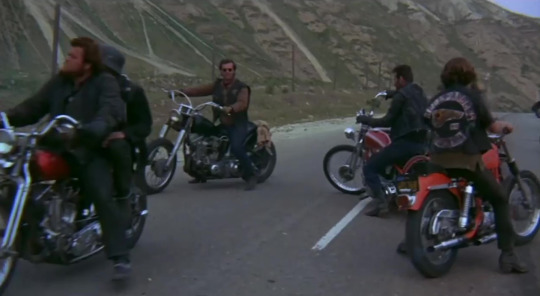
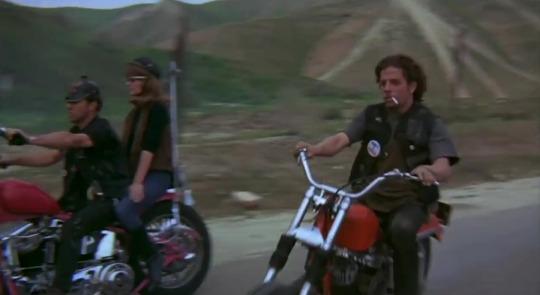

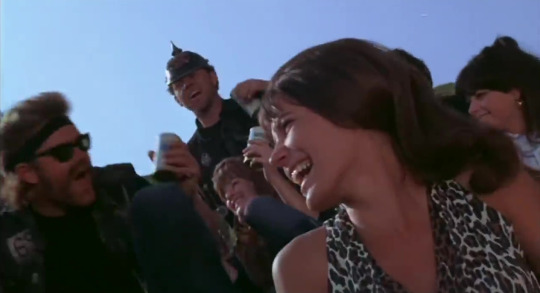
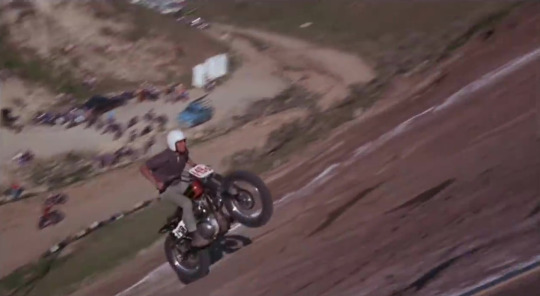
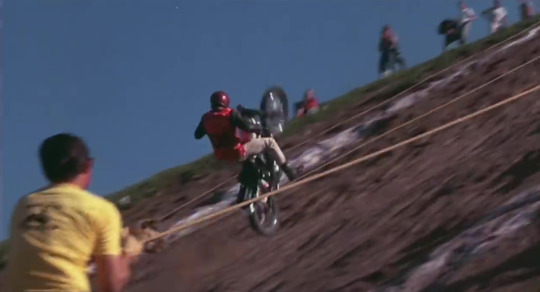
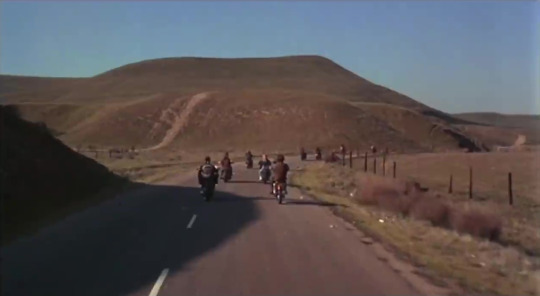
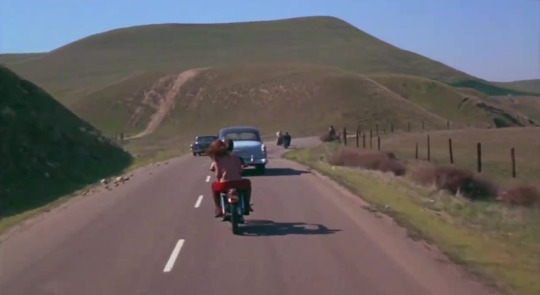
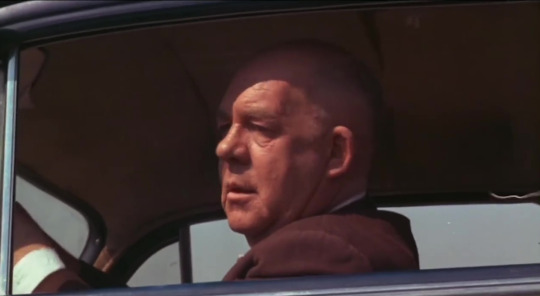
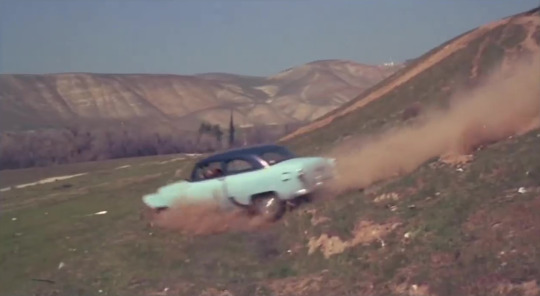
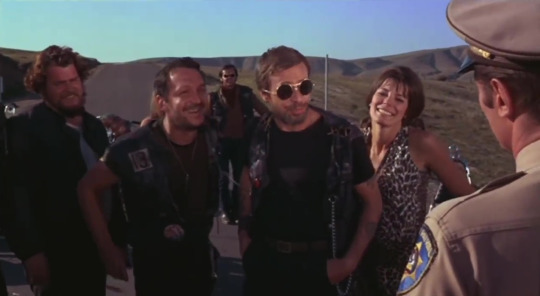
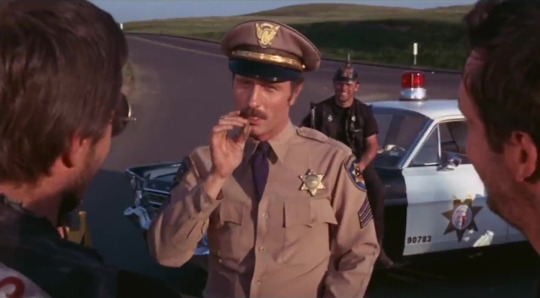
#hells angels on wheels#richard rush#1967#jack nicholson#adam roarke#mimi machu#sabrina scharf#easy rider#stone#badlands#hell's angels#wings#shining#chinatown#les liens de sang#the lawnmower man#schultze gets the blues#fitzcarraldo#aguirre the wrath of god#material#buw#obst & gemüse oder der kunde ist könig#ostlicht#tilt#produktionsbedingungen#film in deutschland#about photography#private photographs#unpublished#nie lubię poniedziałku
2 notes
·
View notes
Text
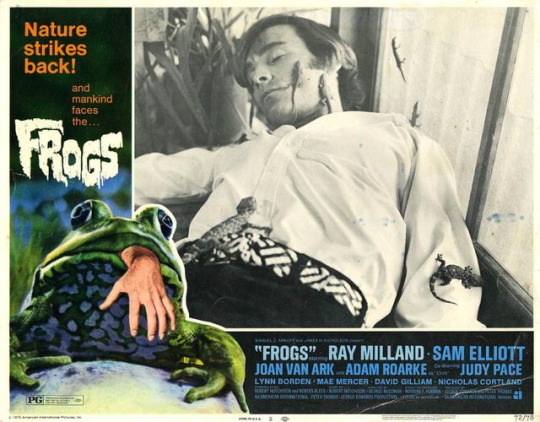
7 notes
·
View notes
Text

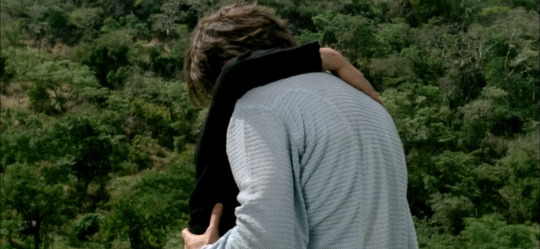
Adam Roarke in The Losers (1970)
#adam roarke#the losers#the losers 1970#nam’s angels#nam’s angels 1970#biker movies#70s movies#1970s#1970#biker#couple#intimacy
9 notes
·
View notes
Photo

Doctor Boyce, Lieutenant Spock, and CPO Garrison on the bridge in first Star Trek pilot, The Cage.
#Star Trek#Star Trek: The Original Series#The Cage#Dr. Philip Boyce#Lieutenant Spock#CPO Garrison#John Hoyt#Leonard Nimoy#Adam Roarke
38 notes
·
View notes
Text
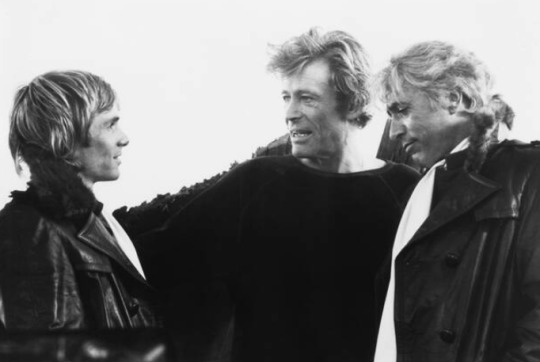
Steve Railsback, Peter O'Toole, and Adam Roarke
The Stunt Man (1980)
directed by Richard Rush
Peter O'Toole
as Eli Cross
Steve Railsback
as Cameron
Adam Roarke
as Raymond Bailey
- still -
#peter o'toole#steve railsback#adam roarke#the stunt man#still of the stunt man#still#on the set of the stunt man#on the set of
4 notes
·
View notes
Text
youtube
Mais um filme que serviu de premissa para Exterminador do futuro? "Cyborg 2087" (1966)
#Cyborg 2087#Franklin Adreon#sci fi#Michael Rennie#Karen Steele#Wendell Corey#Warren Stevens#karl marx#Harry Carey Jr.#terminator#james cameron#Eduard Franz#Chubby Johnson#Adam Roarke#John Beck#Youtube
2 notes
·
View notes
Text

Frogs (1972)
#frogs#ray milland#sam eliot#joan van ark#adam roarke#judy pace#1972#1970s movies#horror movie poster
39 notes
·
View notes
Text

Dirty Mary, Crazy Larry (John Hough, 1974)
Cast: Peter Fonda, Susan George, Adam Roarke, Vic Morrow, Eugene Daniels, Kenneth Tobey, Roddy McDowall, Lynn Borden, Adrianne Herman, James W. Gavin. Screenplay: Lee Chapman, Antonio Santean, based on a novel by Richard Unekis. Cinematography Michael D. Margulies. Production design: Philip Leonard. Film editing: Christopher Holmes. Music: Jimmie Haskell.
"Dirty Mary" is Mary Coombs (Susan George), a petty thief and groupie who gets involved with Larry Rayder (Peter Fonda), a would-be NASCAR star, when he pulls off a supermarket heist with the aid of Deke Sommers (Adam Roarke), an alcoholic auto mechanic, and goes on a run that develops into a widespread, high-speed car (and helicopter) chase, masterminded by state police captain Everett Franklin (Vic Morrow). And that's pretty much all you need to know about Dirty Mary, Crazy Larry, except that the title does a disservice to Deke, the third in the trio and the only close-to-interesting character in the film. Mary and Larry might as well be animated cartoons for all the humanity their characters generate, and George and Fonda play them accordingly. (George's manic performance, often lapsing into her native British accent, got on my nerves.) But Roarke makes some effort to provide some nuance to Deke, a loser whose fondness for the bottle makes him unemployable even though he's shown to be a master at making bashed-up automobiles run. He's also somewhat in love with Larry, his one chance at redemption. Otherwise, the real stars of the film are the cars, a 1966 Chevrolet Impala, a 1969 Dodge Charger, a bunch of Dodge Polara police cars, and that helicopter. You pretty much know how it's all going to end, and when it does it stops, having accomplished the inevitable with no need to point a moral or adorn a tale.
5 notes
·
View notes
Text

┣[ "|"|"|" ]═─ COCKROACH NPTS﹙for anonymous ﹚— predominantly masculine and androgynous,some feminine




◜NAMES◞ — roach,fester,lester,critter,scuttle,hisser¹,craniifer,rudy,ruddy,toffee,ruth,fifi,creepy,crawly,mortimer﹙morty﹚,mordecai﹙mordechai,mordekai,mordy﹚²,rotgut,whiskey,writhe,scurry,infestatianne,rolf,ralph﹙ralphy,ralphie﹚,adam,mold﹙mould﹚,maxwell,wesley,mandible﹙mandibelle,mandibella﹚,jan,jed﹙jeddie,jeddy,jeb﹚,carrie,emery,benjy,skittish,terry,phobianna,rex,mangy﹙mangie﹚,agatha,dishevelle﹙dishevella﹚,roark³,sicknesse,diseaselie,ogtha⁴,ravenous﹙ravenesse﹚,lovebug﹙cuddlebug,snugglebug﹚,ration﹙ratianne,ratianna﹚,bubonic﹙bubonick,bubonicholas﹚,salvia,mandela
¹ after Madagascar hissing roaches. ² Hebrew. ³ Irish,pronounced 'roar-ck.' ⁴ /hj ± /ref
◜PRONOUNS◞ — scurry scurries,fester festers,rot gut,antenna antannae,twitch twitches,infest infests infestation,ver vermin,pho phobia,inse insect insectoid,exo exoskele exoskeleton,hiss hisses,ro roaches,creepy crawly,buzz buzzes,click clicks,mange mangy,grime grimes grimy,pest pests pesticide,hun hungry hunger,lur lurks,infect infects,sick sickly sickness,en ento entomology,lin lingers,🪳 🪳s
◜TITLES ◞ — __ hidden in your cupboard﹙pantry,floorboards﹚,_ antannae,_ insectoid form,_ ravenous﹙insatiable,festering﹚hunger,__ who infests,__ with curled antannae,__ who hisses﹙scurries,scampers,hides away,hungers,lurks﹚,__ eating at your pantry,the indestructible﹙unkillable﹚one,__ who can survive anything,the pervasive﹙festering,lingering﹚infestation﹙pest,vermin﹚,__ who aids in decomposition

PT: Names: Roach, Fester, Lester, Critter, Scuttle, Hisser (After Madagascar hissing roaches), Craniifer, Rudy, Ruddy, Toffee, Ruth, Fifi, Creepy, Crawly, Mortimer/Morty, Mordecai/Mordechai/Mordekai/Mordy (Hebrew), Rotgut, Whiskey, Writhe, Scurry, Infestatianne, Rolf, Ralph/Ralphy/Ralphie, Adam, Mold/Mould, Maxwell, Wesley, Mandible/Mandibelle/Mandibella, Jan, Jed/Jeddie/Jeddy/Jeb, Carrie, Emery, Benjy, Skittish, Terry, Phobianna, Rex, Mangy/Mangie, Agatha, Dishevelle/Dishevella, Roark (Irish, pronounced 'roar-ck'l, Sicknesse, Diseaselie, Ogtha (Half-joking, reference), Ravenous/Ravenesse, Lovebug/Cuddlebug/Snugglebug, Ration/Ratianne/Ratianna, Bubonic/Bubonick/Bubonicholas, Salvia, Mandela
Pronouns: Scurry/Scurries, Fester/Festers, Rot/Gut, Antenna/Antannae, Twitch/Twitches, Infest/Infests/Infestation, Ver/Vermin, Pho/Phobia, Inse/Insect/Insectoid, Exo/Exoskele/Exoskeleton, Hiss/Hisses, Ro/Roaches, Creepy/Crawly, Buzz/Buzzes, Click/Clicks, Mange/Mangy, Grime/Grimes/Grimy, Pest/Pests/Pesticide, Hun/Hungry/Hunger, Lur/Lurks, Infect/Infects, Sick/Sickly/Sickness, En/Ento/Entomology, Lin/Lingers, Cockroach Emoji/Cockroach Emojis
Titles: (Pronoun) hidden in your cupboard/pantry/floorboards, (Pronoun) antannae, (Pronoun) insectoid form, (Pronoun) ravenous/insatiable/festering hunger, (Pronoun) who infests, (Pronoun) with curled antannae, (Pronoun) who hisses/scurries/scampers/hides away/hungers/lurks, (Pronoun) eating at your pantry, the indestructible/unkillable one, (Pronoun) who can survive anything, the pervasive/festering/lingering infestation/pest/vermin, (Pronoun) who aids in decomposition
#﹙📘﹚,“ This will be quick . ”#npts#npt#npt list#npt suggestions#npt ideas#npt pack#nputs#nput#bugs#cockroach
98 notes
·
View notes
Text
youtube
Some very fun choreography
"Performers / Choreography:
Adam Lytle
Ben Aycrigg
Camera: Joe Roark
Edit: Adam Lytle
Song: "What the Peephole Say" - Queens of the Stone Age"
For anyone who hasn’t yet seen the following links:
.
.
.
.
Some advice on how to start studying the sources generally can be found in these older posts
.
.
.
.
Remember to check out A Guide to Starting a Liberation Martial Arts Gym as it may help with your own club/gym/dojo/school culture and approach.Check out their curriculum too.
.
.
.
.
Fear is the Mind Killer: How to Build a Training Culture that Fosters Strength and Resilience by Kajetan Sadowski may be relevant as well.
.
.
.
.
“How We Learn to Move: A Revolution in the Way We Coach & Practice Sports Skills” by Rob Gray as well as this post that goes over the basics of his constraints lead, ecological approach.
.
.
.
.
Another useful book to check out is The Theory and Practice of Historical European Martial Arts (while about HEMA, a lot of it is applicable to other historical martial arts clubs dealing with research and recreation of old fighting systems).
.
.
.
.
Trauma informed coaching and why it matters
.
.
.
.
Look at the previous posts in relation to running and cardio to learn how that relates to historical fencing.
.
.
.
.
Why having a systematic approach to training can be beneficial
.
.
.
.
Why we may not want one attack 10 000 times, nor 10 000 attacks done once, but a third option.
.
.
.
.
How consent and opting in function and why it matters.
.
.
.
.
More on tactics in fencing
.
.
.
.
Types of fencers
.
.
.
.
Open vs closed skills
.
.
.
.
The three primary factors to safety within historical fencing
.
.
.
.
Worth checking out are this blogs tags on pedagogy and teaching for other related useful posts.
.
.
.
.
And if you train any weapon based form of historical fencing check out the ‘HEMA game archive’ where you can find a plethora of different drills, focused sparring and game options to use for effective, useful and fun training.
.
.
.
.
Check out the cool hemabookshelf facsimile project.
.
.
.
.
For more on how to use youtube content for learning historical fencing I suggest checking out these older posts on the concept of video study of sparring and tournament footage.
.
.
.
.
The provoker-taker-hitter tactical concept and its uses
.
.
.
.
.
Approaches to goals and methodology in historical fencing
.
.
.
.
.
A short article on why learning about other sports and activities can benefit folks in combat sports
.
.
.
.
.
Consider getting some patches of this sort or these cool rashguards to show support for good causes or a t-shirt like to send a good message while at training.
14 notes
·
View notes
Text
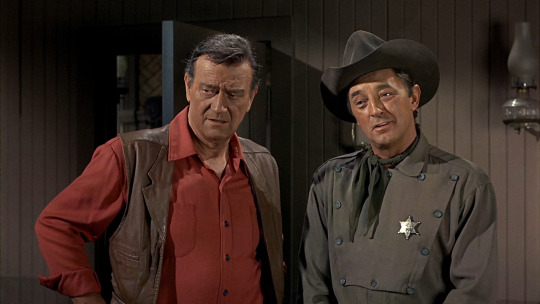
El Dorado (1966)
Pulp science fiction writer Leigh Brackett was an anomaly in the genre. Not only was she a woman, but she also crossed over into Hollywood sporadically. Alongside her novellas and serialized stories, her film credits are enviable: The Big Sleep (1946; okay, this film’s story never made sense, but its romantic dialogue is legendary), Rio Bravo (1959), and, posthumously, The Empire Strikes Back (1980). To Brackett, she deemed her script to 1966’s El Dorado, a loose adaptation of Harry Brown’s novel The Stars in Their Courses, as “the best script [she] had done in [her] life.” High praise for oneself, especially as one could easily interpret El Dorado as a lighter, slightly more comic version of Rio Bravo. El Dorado was Brackett’s fourth of five collaborations with director Howard Hawks (1938’s Bringing Up Baby; the four other Brackett-Hawks collaborations include The Big Sleep, 1948’s Red River, Rio Bravo, and 1970’s Rio Lobo). Brackett’s inventiveness and spiky dialogue makes even the more clichéd elements of the story more entertaining than they should be. Other than Hawks and the ensemble cast, it is Brackett who is most responsible for the film’s success.
Somewhere in the American West, cowboy Cole Thornton (John Wayne) rides into the town of El Dorado for a job offer from local landowner Bart Jason (Ed Asner). His longtime friend, Sheriff J.P. Harrah (Robert Mitchum) meets with him, quickly deduces the reason for Cole’s presence in town, and effortlessly persuades his friend to turn down the job (the mutual respect for each other – between the characters and between Mitchum and Wayne – is apparent from the moment they meet). Jason’s job for to Thornton included coercing, gently or otherwise, the MacDonald family to abandon their land and water rights. The MacDonalds are an honest family, Harrah says, and they have been the target of regular harassment from Bart Jason and his men. Over the rest of the film, Harrah, Thornton, elderly deputy Bull Harris (Arthur Hunnicutt), a youthful gunslinger named Mississippi (James Caan), and Dr. Miller (Paul Fix) find themselves further embroiled in Jason’s repeated attempts to violently force the MacDonalds out.
El Dorado’s large supporting cast also includes saloon owner Maudie (Charlene Holt, whose character has a hankering for Thornton); R.G. Armstrong, Christopher George, Johnny Crawford, and Adam Roarke as the MacDonald boys; and Michele Carey as the hot-tempered Josephine “Joey” MacDonald (Carey and Holt play two of the final examples of the “Hawksian woman”).
Comparisons to Rio Bravo are all but inevitable to cinephiles and fans of American Westerns. Where Rio Bravo is more of a movie where friends revel in each other’s’ vibes, El Dorado is squarely a story of aging cowboys whose foibles – Harrah’s alcoholism to drown his self-pity, Thornton’s first act spinal injury and free-roaming ways – may spell the difference between local tragedy and justice. Despite what she might say, Brackett’s script to Rio Bravo (co-written by Jules Furthman) is far tighter than El Dorado’s, which employs a momentum-killing six-month time skip just as its dramatic interest begins to pique (editor John Woodcock does not provide any assistance here). It takes just a tad too much time for El Dorado, which uses the time skip to introduce Mississippi and sideline Harrah due to his heavy drinking, to regain the dramatic interest it established in the opening third of the movie.
Both casts of Rio Bravo and El Dorado have advantages over the other. Rio Bravo boasts Walter Brennan and Ward Bond in supporting roles (yet I’ve never been too fond of Dean Martin’s performance). El Dorado has Mitchum (whose dynamic with Wayne is fantastic), Caan (miles better than a Ricky Nelson sticking out like a rock 'n' roll kid from the 1950s), and not enough Asner. The two films, to me, are similar in quality, and I vacillate between which is “better” (but, on a rewatch, I think I might prefer El Dorado)*.
The interplay between John Wayne and Robert Mitchum lies at the heart of El Dorado. In 2024, it remains fashionable to lambaste Wayne for not being able to act and “playing himself” – an accusation that has been around for decades. With more lightly comedic material than usual (I would not consider El Dorado a comedy, but there are good-hearted ribbings and wry situational observances that prevent this from being a pure dramatic Western), Wayne revives some of the comic timing from The Quiet Man (1952) to decent effect here, especially around Mitchum and Caan. But most compellingly, Howard Hawks directs Wayne in a way that acknowledges and plays against his on-screen persona as the accomplished Western hero. Thornton’s spinal injury in the film’s opening act sees him reckon with his mortality – in jest and in seriousness. Wayne’s delivery and his physical acting is striking to longtime viewers such as yours truly, as it is one of the first films in which Wayne must come to terms with aging and his growing fallibility, as well as his reputation for outgunning and outthinking his opponents. The seeds of what would be Wayne’s late career signature performances in The Cowboys (1972) and The Shootist (1976) begin to show themselves here.
Mitchum, perpetually sleepy-eyed and always my first choice to play a slovenly protagonist good with a revolver, is wonderful here as a sheriff with the romantic maturity of a teenager who unaccustomed to rejection. The duality of Mitchum’s Sheriff Harrah here – the fastest gun for miles around determined to uphold the law and the inebriated slob who retains a sense of humor that makes self-pitying and self-deprecation indistinguishable – is difficult to pull off, but Mitchum does exactly that. Mitchum and Wayne’s historical on-screen personas are not polar opposites, but there is nevertheless little overlap between the two aside for their marksmanship. In their only screen appearance together (the two both co-starred on 1962’s The Longest Day, but their scenes were filmed separately), it seems the two have known each other for ages. The subtle glances, the knowing facial expressions, and gentlemanly warmth in conversation bely the fact that this is their first film together. But for El Dorado, their rapport benefits the film magnificently.
Like his good friend Ernest Hemingway, Howard Hawks admired masculine competence, professionalism, and self-reliance. El Dorado rambles a little bit about duty, honor, and loyalty, but all of this surrounds the central tenants of male friendship found here and in Rio Bravo. It is the development of that friendship and simultaneous professional excellence, rather than any plot details, that concerns Hawks – and this is the frame through which he wants viewers to see this film. By his own self admission, Hawks stated that he was, “much more interested in the story of a friendship between two men” than anything else in El Dorado (including fidelity to the original novel). The range war between Jason and the MacDonald family lacks as much exposition as some might expect. Hawks and Brackett refuse to fully explain how the dispute started, as well as what the conflict has wrought during the film’s time skip.
Those who are not as competent or professional – in this film’s case, James Caan’s character of Mississippi – are simply comic relief until they can prove otherwise. For those aware of Hawks’ aversion to Fred Zinnemann’s High Noon (1952) – in which Gary Cooper’s Sheriff Will Kane spends almost ninety minutes going around town asking for help when he learns a few recently-released convicts are coming to murder him (Hawks, to my consternation, considered this cowardly and a disgrace to the Western genre) – El Dorado is yet another reaction against it.
Unlike Hemingway, Hawks (who was by no means a feminist) rejects Hemingway’s reductionist portrayals of women as “Dark” (submissive lovers) or “Light” (castrating man-killers). The female protagonists in Hawks’ films, too, demonstrate tremendous ability. The saloon keeper, Maudie, is perhaps the most keenly observant individual in the entire picture, and can pick out the psychology of a person whether she has known them for ages (such as our leads) or if they have just stumbled in for a drink. She may be the smartest person in town. Her fellow Hawksian Woman is the wild-haired Joey MacDonald (her hair feels at times like an anachronism airlifted from the 1960s, rather than a likelihood of the Old West), quick on a gun and with a quicker temper. There is not nearly enough attention on either character as previous Hawksian Women (nevertheless, we need to recall what Hawks wanted to concentrate on most here, and that’s male friendship), but what there is still improves El Dorado’s watchability aside from our two leads.
youtube
A worthy score from composer Nelson Riddle (1960’s Ocean’s 11, 1962’s Lolita) dials back the main theme more than one might expect from a midcentury Western, but it is still effective music for this film. Riddle is best known as an arranger and orchestrator for the likes of Frank Sinatra, Nat King Cole, and Linda Ronstadt, not a composer. Nevertheless, arrangers and orchestrators can learn composition through osmosis if they have not already been trained in music composition. Riddle’s liberal use of harmonica perfectly captures the setting, although his use of electric guitar/bass and discernible lack of harmonic identity (especially in the strings) feels too much like television scoring from this era – Riddle was the principal composer for the 1960s Batman television series starring Adam West. Instead, the score highlights revolve around uses of the main title song and its variations.
And what about that title song? Sung by George Alexander and the Mellomen, with lyrics by John Gabriel (Dr. Seneca Beaulac on ABC’s soap opera Ryan’s Hope), “El Dorado” fits the film perfectly, and Alexander’s rich baritone musically exemplifies the masculine themes of El Dorado. Strings double underneath the vocals, with the occasional woodwind and brass section and peaking out from the melodic doubling (again, one wishes for more harmonic interest here aside from doubling the melody). A snippet of the song’s lyrics reference to Edgar Allan Poe’s poem “Eldorado”; the poem itself is recited by Mississippi. “El Dorado” is nothing but an earworm, and I just wish it (and its variations) made more appearances in the film itself.
Though Rio Bravo had elements of a changing of the guard, El Dorado cannot help but feel, by its conclusion, as a generational marker, a near-last hurrah – intentionally or otherwise. This is not, like The Wild Bunch (1969) or Unforgiven (1992), a eulogy of the Old American West. In 1966, El Dorado came at a time when the great figures of Old Hollywood and the height of the American Western’s popularity (Wayne and Mitchum) were no longer the dominant forces in American cinema. The film’s title song even opens with oil paintings from Western artist Olaf Weighorst, of evocatively overcast vistas of the West, as if in reflection.
El Dorado would be Leigh Brackett and Howard Hawks’ penultimate collaboration and penultimate Western, with Rio Lobo a few years away. Their professional partnership, so unlikely given Hawks’ status in Hollywood and Brackett’s supposedly disreputable day job as a pulp science fiction writer, is maybe one of the most underrated and undermentioned in Old Hollywood history – one that spanned the height of Golden Age Hollywood to its final years. For El Dorado, Brackett, despite a few structural missteps, once again shows her gifts for dialogue and a keen understanding of Hawks’ directorial intentions. Hawks arguably improves upon his depiction of male camaraderie from Rio Bravo, allowing our protagonists to intuit their aging (some might say obsolescence). This is a sterling Western, if slightly out of time.
My rating: 8.5/10
^ Based on my personal imdb rating. My interpretation of that ratings system can be found in the “Ratings system” page on my blog. Half-points are always rounded down.
* As of this write-up’s publication, I have not seen Rio Lobo (1970), which forms an unofficial trilogy of Westerns with Rio Bravo and El Dorado.
For more of my reviews tagged “My Movie Odyssey”, check out the tag of the same name on my blog..
#El Dorado#Howard Hawks#John Wayne#Robert Mitchum#James Caan#Charlene Holt#Paul Fix#Arthur Hunnicutt#Michele Carey#Leigh Brackett#Ed Asner#R.G. Armstrong#Harold Rosson#John Woodcock#Nelson Riddle#Harry Brown#TCM#My Movie Odyssey
2 notes
·
View notes
Text

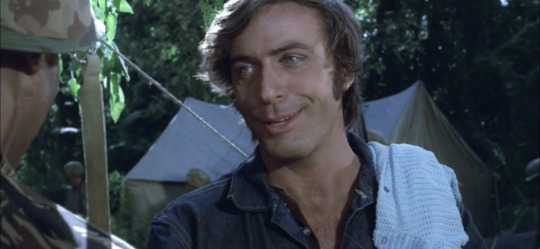
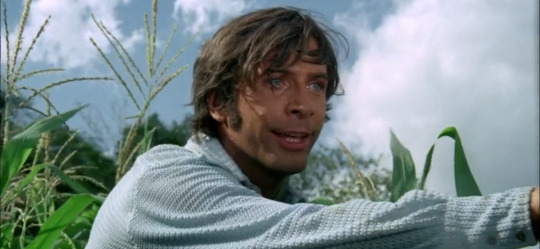
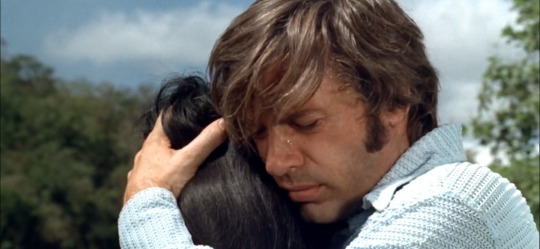
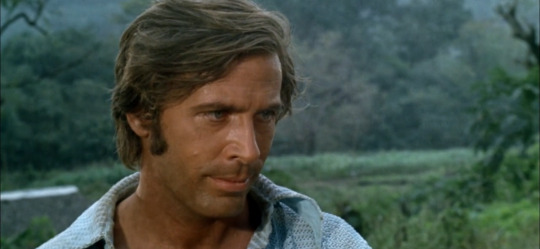
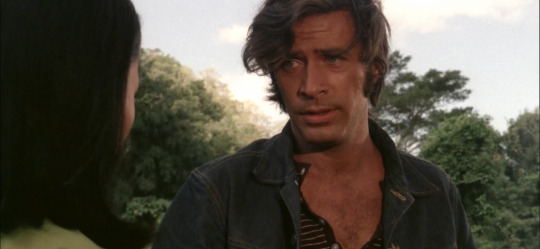

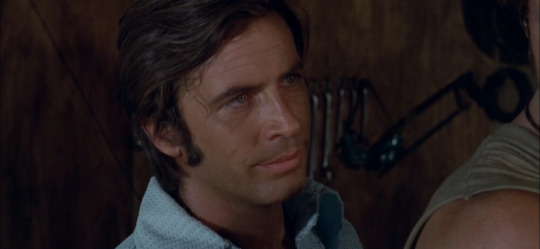
Adam Roarke in The Losers (1970)
also released as Nam’s Angels
#adam roarke#the losers#the losers 1970#nam’s angels#nam’s angels 1970#70s movies#biker movies#1970#biker#why is there no adam roarke content anywhere?#too bad he never made it big#wish he could’ve been in more movies
13 notes
·
View notes
Photo

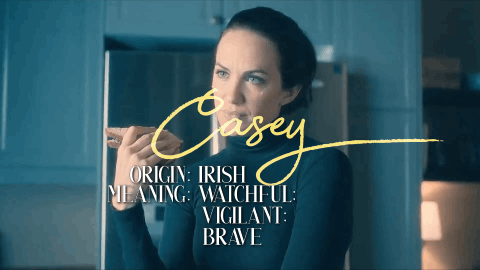
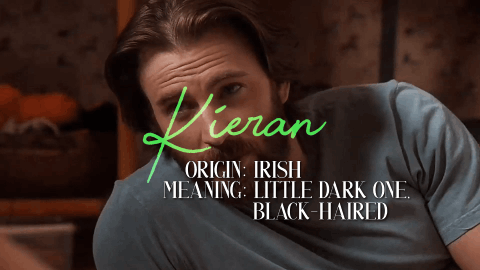

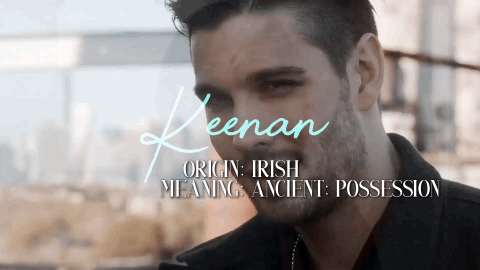
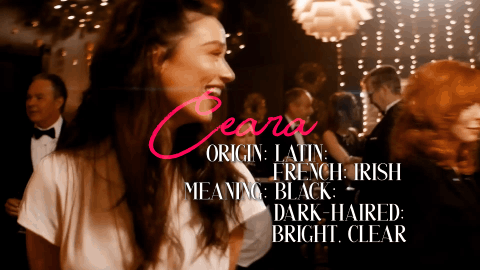
SUNSHINE EXCHANGE
MEET KAITLYNN KANE’S FAMILY for @malice1329
Adam Kane - Father
Casey Roark - Mother, deceased
Kieran Kane - Older Brother
Kaitlynn Kane
Keenan Kane - Younger Triplet Brother
Ceara Kane - Younger Triplet Sister
I hope you like it!
#ocappreciation#ocapp#annas sunshine exchange#mutant x oc#not my oc#my edits#audrey's oc: kaitlynn kane
8 notes
·
View notes
Text
The White Lotus: The Devil produces a series loaded-down with gay stereotypes
So I wasn't sure about the HBO Max series White Lotus, set in a beach resort in Italy. But someone told me that there were gay characters in Season 2, so here goes, Episode 2.1:
Scene 1: A beach resort featuring bikini models sitting under umbrellas. A woman with her breasts hanging out of her swimsuit starts a conversation with two women who just arrived from America. She's leaving in a few hours, but she praises the hotel, the staff, the food, and the wine. So she spent her entire trip on a beach that looks like every beach everywhere? Why not try to actually see the country? Her semi-bare butt goes into the water for one last swim -- and she bumps into a dead body!
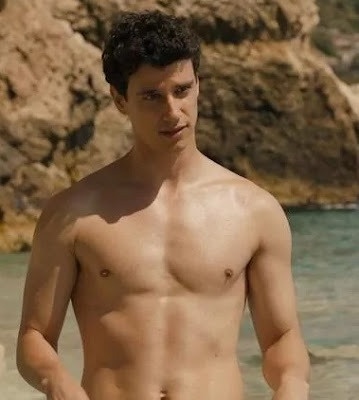
Cut to hotel staff Rocco and Valencia watching body bags being hauled away. Several bodies of guests have turned up!
Scene 2: A week earlier. Two heterosexual couples on a boat, one distant and arguing, the other snuggling, kissing, and nose-rubbing. Then a depressed woman, Allora, walking through town. Her friend Mia asks what's wrong: "Massimo has a new girlfriend, and I'm jealous." Mia drags her away: it's almost time for the boat to arrive. So is this a flashback in a flashback, before the girls get on the boat with the heterosexual couples?
A boat arriving while the staff waves. "Smiles, everyone, smiles!' Allora and Mia look on from afar, wondering whic one "he" is. He who? A new boyfriend met on Tinder?
Down on the dock, Employee Valencia tells the Old Guy: "I'm surprised you are here. It's a long way from L.A., and you are quite old." Way to insult your guests! Next an unidentified older-younger same-sex couple; Cameron (Theo James, above) and wife, the kissing, nose-rubbing couple); Ethan (Will Sharpe, left) and wife, the distant, arguing couple (he forces her to drink wine); and a flowsy rich lady with a hundred suitcases, Ms. McQuaid. "I am your host, Mr. Roarke. Welcome to Fantasy Island."
Scene 3: The White Lotus resort is in an old hilltop convent, nowhere near the beach -- but with a view of Mount Etna. What kind of beachside resort is this, where you have to take a bus to get to the beach?
Employee Rocco tells the two couples, who are apparently all friends, the story of the testi morti: a Moor came to Sicily and seduced a local woman. When she discovered that he had a wife and kids back home, she cut off his head. It's a warning for husbands not to cheat.
Then he shows them that the two rooms connect through a secret doorway. Ethan is up for wife-swapping, but his wife disapproves: "We won't be using that." When the kissing, nose-rubbing couple leave, Ethan starts yelling at her. Jerk! Not into it means not into it.
Meanwhile, the older-younger same-sex couple turn out to be father Dominic and young adult son Albie (Adam DiMarco), traveling with Grandpa Bert, who flirts with a female employee until the others reigns them in. They're here to visit their ancestral town.
So far the only potentially gay guest is Albie, so I'll fast-forward to his story.
Minute 24: Albie gets out of the pool (nice chest shot, but every other guy in the vicinity is fully clothed0. He sits down next to Portia, a teenage girl who just got off the phone with a friend telling her to "get some dicks" while on vacation. SHe starts crying because "they" have half a billion dollars but won't let her have any fun. Albie consoles her.
Minute 46: They kiss. Ok, so Albie is straight. All of the other guests are married, hetero-horny, or both. Who is the gay one?
Research reveals that he is Quentin, one of those aristocratic, decadent, fey Quentin Crisp types (parents don't know that their kid is gay when he is born, so why do gay guys on tv always have tired stereotype names, like Quentin and Blaine?). This closeted jerk pays a group of straight men to have sex with him and introduces them as "my nephew and his friends." He's also a drug addict and a murderer. Pure homophobic sleaze.

Wait -- I didn't notice before, but this series is created by, written by, and directed by MIKE WHITE, aka The Devil. This is the jerk who wrote and starred in Chuck and Buck, about gay relationships being only for adolescents experimenting on their way to a "normal" heterosexual adulthood -- then had the monumental gall to advertise it in gay magazines! Apparently those poor souls who get stuck in their adolescent "gay phase" turn into decadent, fey drug addicted murderers.
2 notes
·
View notes